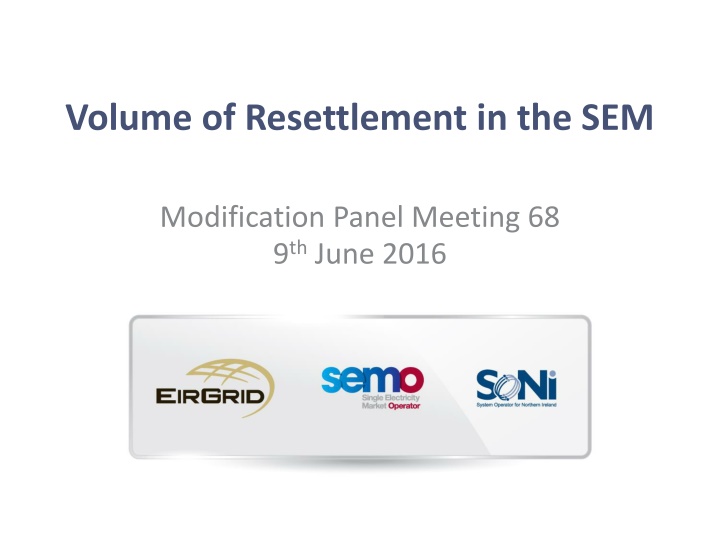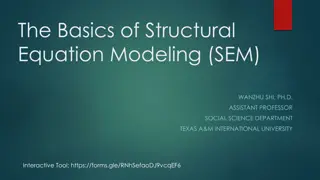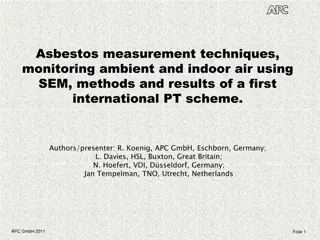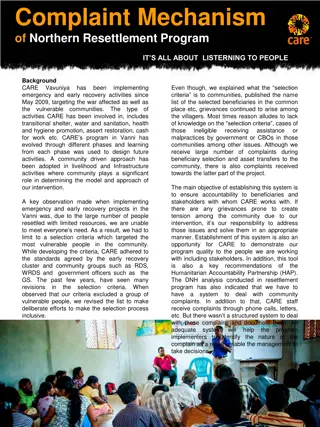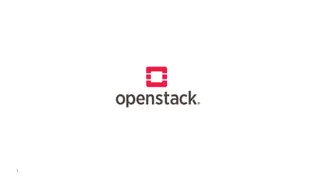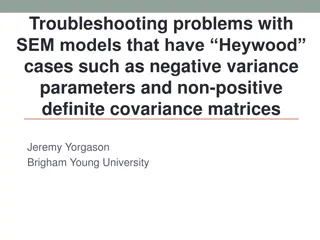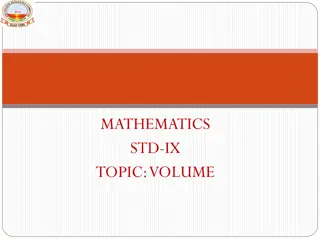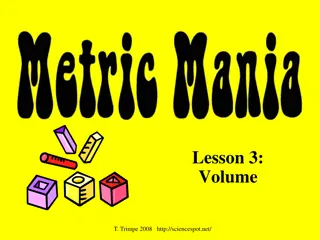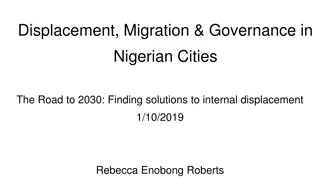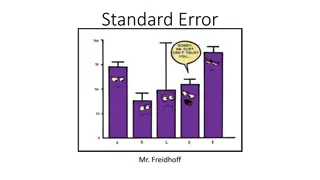Volume of Resettlement in the SEM
Detailed analysis of the volume of resettlement in the SEM Modification Panel Meeting held on 9th June 2016, focusing on capturing up-to-date meter data for suppliers and autonomous generators. The methodology involves comparing daily market total meter volumes, calculating average materiality, and examining variances in metered demand and generation. Insights into the impact on participants and implications for trading and settlement codes are discussed.
Download Presentation

Please find below an Image/Link to download the presentation.
The content on the website is provided AS IS for your information and personal use only. It may not be sold, licensed, or shared on other websites without obtaining consent from the author.If you encounter any issues during the download, it is possible that the publisher has removed the file from their server.
You are allowed to download the files provided on this website for personal or commercial use, subject to the condition that they are used lawfully. All files are the property of their respective owners.
The content on the website is provided AS IS for your information and personal use only. It may not be sold, licensed, or shared on other websites without obtaining consent from the author.
E N D
Presentation Transcript
Volume of Resettlement in the SEM Modification Panel Meeting 68 9thJune 2016
The main Purpose of Resettlement is to capture more up to date Meter data for Suppliers and Autonomous Generators Timetabled Resettlement Ad hoc Resettlement When? When? As and when a High Materiality Formal Query has been upheld or post Month 13 upheld Formal Query Settlement date plus 4 months (M+4) Settlement date plus 13 months (M+13) Why? Why? High Materiality = above Settlement Threshold (> 50k) Trading & Settlement Code requirement To capture more accurate Meter Data for Non Price Effecting Generation and Demand (NPEG/NPED) Low Materiality upheld Formal Settlement Queries Changes to DQs, Meter Data, Availability, etc. Who is impacted? Potentially allParticipants 1
Volume of Resettlement Analysis Methodology Compare Daily Market Total Meter Volumes at each Resettlement Use Load Weighted Average SMP to calculate average materiality Identify impact on a per unit basis Case Study: July 2013 to Apr 2015 Initial v M4 M4 vs M13 Considerable reduction in M13 when compared with M4. Significant variances particularly on Metered Demand; M4 Metered Demand showing higher volumes, meaning charges to Suppliers increase for additional consumption. Same direction of changes - Again, Suppliers charges increase for additional consumption. 2
Average Metered Demand Variances - Suppliers Average Demand Variances per Supplier 180.00 160.00 140.00 Metered Demand Diff (MWh) 120.00 100.00 80.00 60.00 40.00 20.00 - Date Average M4 Diff per Supplier (MWh) Average M13 Diff per Supplier (MWh) 3
Average Materiality - Suppliers Average Materiality Variances per Supplier 14,000.00 12,000.00 10,000.00 Materiality Diff ( /MWh) 8,000.00 6,000.00 4,000.00 2,000.00 - Date Average M4 Diff per Supplier ( /MWh) Average M13 Diff per Supplier ( /MWh) 4
Average Metered Generation Variances - APTGs Average Generation Variances per APTG 30.00 Metered Generation Diff (MWh) 25.00 20.00 15.00 10.00 5.00 - Date Average M4 Diff per APT (MWh) Average M13 Diff per APT (MWh) 5
Average Materiality - APTGs Average Materiality Variances per APTG 2,000.00 1,800.00 1,600.00 Materiality Diff ( /MWh) 1,400.00 1,200.00 1,000.00 800.00 600.00 400.00 200.00 - Date Average M4 Diff per APT ( /MWh) Average M13 Diff per APT ( /MWh) 6
Comparison of M+4 Total Demand Variances by Month 50,000 Total Demand Variances at M+4 45,000 40,000 Total Metered Demand Diff (MWh) 35,000 30,000 25,000 20,000 15,000 10,000 5,000 0 Jan Feb Mar Apr May Jun Jul Aug Sep Oct Nov Dec 2013 2014 2015 7
Comparison of M+13 Total Demand Variances by Month 16,000 Total Demand Variances at M+13 14,000 Total Metered Demand Diff (MWh) 12,000 10,000 8,000 6,000 4,000 2,000 0 Jan Feb Mar Apr May Jun Jul Aug Sep Oct Nov Dec 2013 2014 2015 8
The way forward Key Points Variances reduce considerably between M+4 and M+13 Resettlement; These variances impact Suppliers and Autonomous Generators; Trends showing a potential decrease in Resettlement volumes since 2013; Considerations Inconvenience of parallel running and costs of systems support; Costs to Participants, particularly Suppliers; Implications for MDPs, PSO levy, TUoS charging etc; Options Can more accurate data be sent at M+4? Other means of capturing Meter Data at different stages pre M+13? Leave status quo? 9
